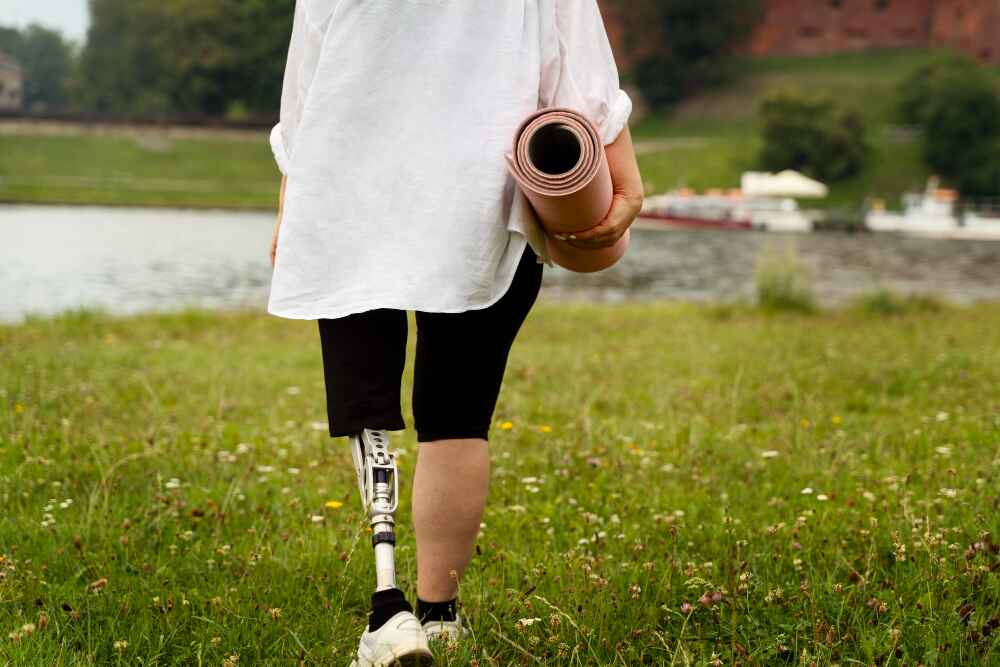If there are any constants in this world, it’s injury, illness, and death. Biotechnologists, medical researchers, and scientists all over the world are striving to find ways to end these forever. Prosthetic is the profession of replacing extremities like hands, feet, arms, legs, nose, etc. Prostheses are medical devices used to compensate for a missing or amputated segment. The prosthesis is a unique combination of appropriate materials, alignment, design, and construction to match the individual’s functional needs.
Prosthetists have been defined as Independent Healthcare Practitioners by WHO in 2017. So, a Prosthetist with formal education is a Doctor as per the WHO definition.
Roboticis and medical engineers are currently developing prosthetic analogs of every body part, from bionic eyes to electronic ear drums. Imagine a replacement hand with interchangeable folding tools that are easy to access. If someone struggles to see in the dark, they can just switch to the infrared vision setting on the bionic eyes!
PROCESS OF PROSTHESIS
The first step is casting the patient to make the mold which will be used to create their prosthetic. This is usually done over a silicone or gel liner, which is used to protect the skin from shear forces and help suspend the prosthetic to the patient.
Once that is done and fits properly onto the patient, the remaining components are attached and aligned correctly to fit the patient’s needs. Furthermore, the components need to be weighted correctly for the patient’s weight and activity level. They can be controlled by microprocessors, hydraulics, pneumatics, or mechanically.
MAJOR PROBLEMS RELATED TO PROSTHETICS
Prosthetic surgery is very expensive and requires some mix of robotics, bionics, or cybernetics. The most cost-effective and functional current replacement is the “blade” which is simple, well-balanced, and cheap because it uses no electronics.
The biggest barrier towards lifelike limbs is that signals cannot travel in an unbroken path from the brain to the limb and back. Recently, Scientists have developed several ways to bridge the gap. They have placed electrodes on the remaining muscle near the amputation site. They are now working out the pairing of agonistic and antagonistic muscles. Together, such opposing muscle pairs can allow fluidic adjustment of a limb’s force, position, and speed.
Most prosthetic devices used are quite stiff because these devices are meant to support. The future is in robotic technologies that can modulate stiffness in real time based on the desired function of the machine and its user.
The extensive use of prosthetics has resulted in complications and residual stump issues. While the use of prosthetics provides increased mobility and independence, long-term use puts a toll on the rest of the body.
There is a balance issue for amputees wearing
prosthetics; they can walk on a
prosthetic leg, but there is a constant fear of falling.
PROSTHESIS EXPERIENCE WITH HUMANS
According to a student, Abdullah, “I had my right leg amputated above the knee about 5 years ago, since then a prosthetic leg has been my faithful assistant. It feels great to be able to walk. Sometimes I end up tired but there is always that determination within me to prove that I can do as much as anyone else, and this is only because I use an artificial leg. It feels different, but once you get used to it, it seems almost like a part of your own body. In the end, it is only about the willpower of each person, the more you fight, the better the prosthesis feels. I got my life back and it has been worth the effort and expense”.
PROSTHETIC WITH ANIMALS
Prosthetics not only give human beings back their independence and mobility, but animals are also benefiting from them.
Derrick Campana is one of the people in the world who makes custom animal prosthesis. The use of prostheses for injured animals is becoming increasingly common. The design and production of animal prosthetic have expanded in recent years such as 3D-printed prosthetic technology and cheaper, sturdy materials. Animals who previously would have struggled can now get a new lease on life with reduced costs for their owners.
WHAT ARE ANIMAL PROSTHETIC MADE OF?
Animal prosthetics can be made from different materials depending on the need for the prosthetic. For example, some prosthetic limbs can be made from plastic or titanium, and new tails for alligators, and fins for dolphins can be created using rubber.
HISTORY OF THE PROSTHETIC
The history of prosthetics is very rich. It started with simple wood or iron artificial legs and developed into sophisticated devices that came closer to mimicking biological function.
In the earlier times, the Egyptian artificial limbs made of fibre caught the attention, whereas from 1069 to 664 B.C., it was a wood and leather toe designed for a noblewoman dubbed The Cairo Toe, came into existence. In between 1295 to 664 B.C., prosthesis was performed using paper mache-like material of linen, glue, and plaster. In Italy back in 300 B.C., the oldest surviving leg prosthesis was uncovered.
Ambroise Paré is regarded as the father of modern surgery. He developed functional prosthetics for all parts of the body using advanced and improved amputation techniques, which are still used today. He also transitioned away from wood to leather, paper, and glue.
In the late 1990s, 3D printing was first used in medical applications starting with dental implants. While prosthetic applications for 3D printing were explored by Rogers et al at UTSA and UT Austin in 1991. Advances in software, materials, and wider accessibility have improved the adoption of 3D printing in the prosthetic industry.
TODAY AND AHEAD
Thanks to the passion of prosthetic pioneers, today we are closer than ever to replicating the full function of a biological limb. The use of Microprocessor knees and 3D-printed prosthetics has sparked a renaissance of cost-effective DIY prosthetic design and production.
There is a bright new future for prosthetic devices that includes the advancement of Neuroprosthetics and fully realized brain-controlled devices, with which we have never been closer to the dream of fully replacing a missing limb.
 Syeda Sundeela Fayyaz
Syeda Sundeela Fayyaz




